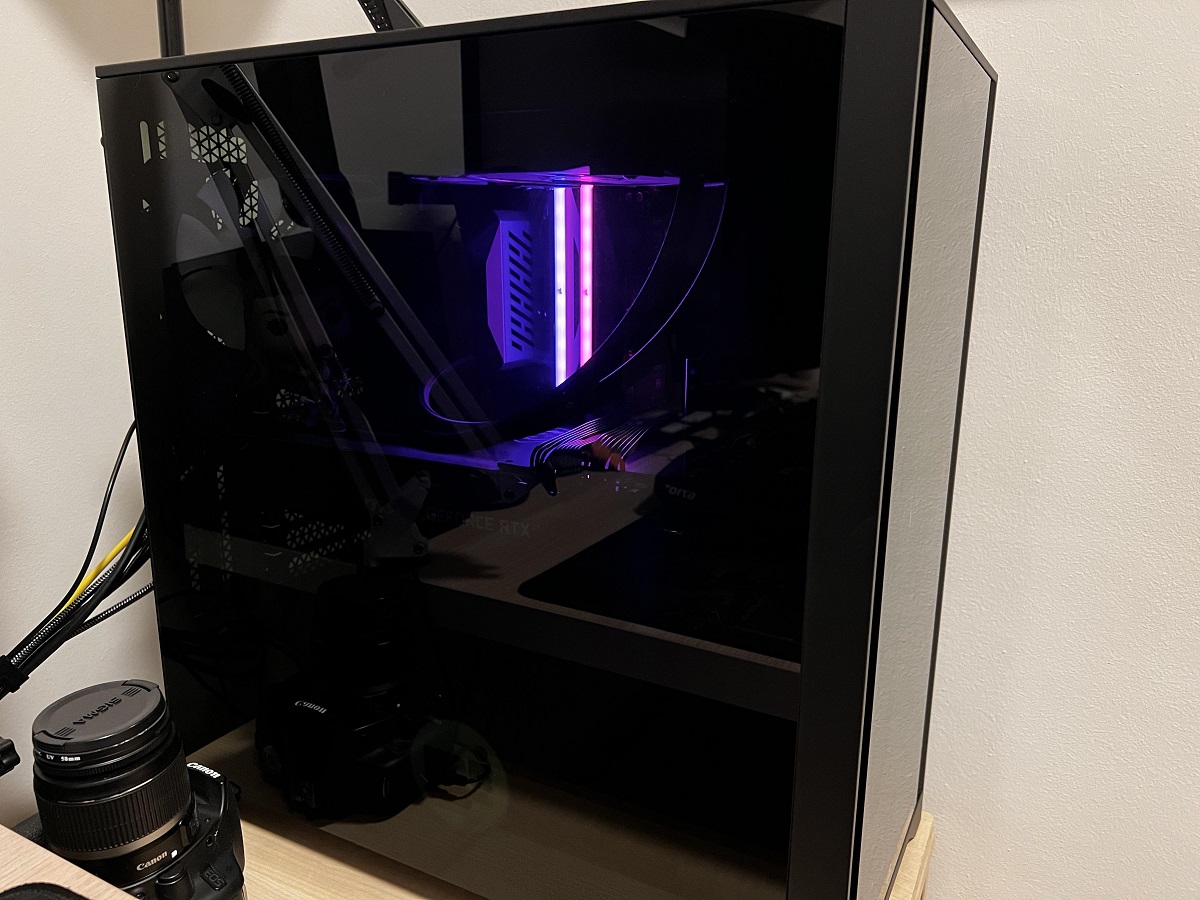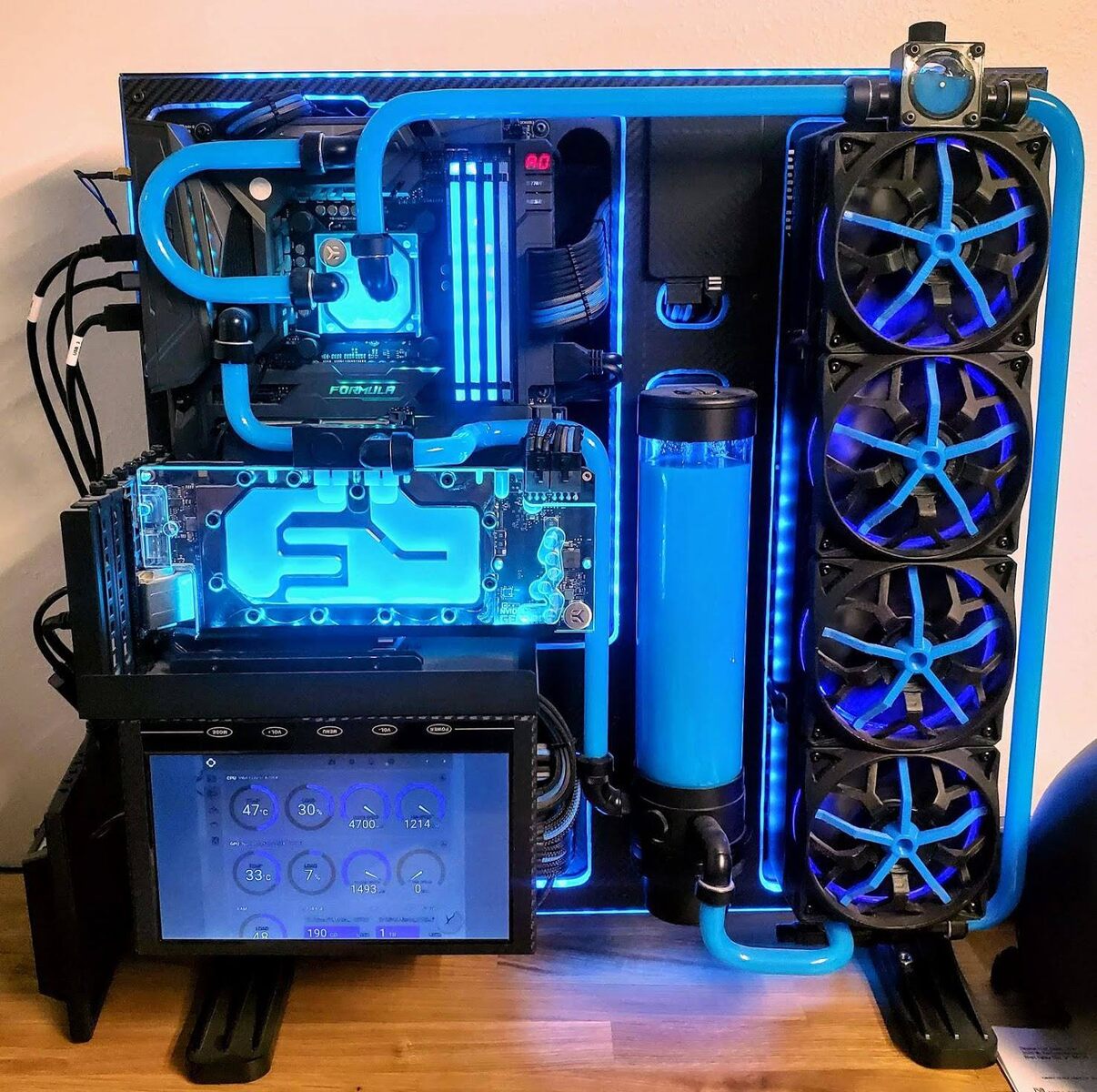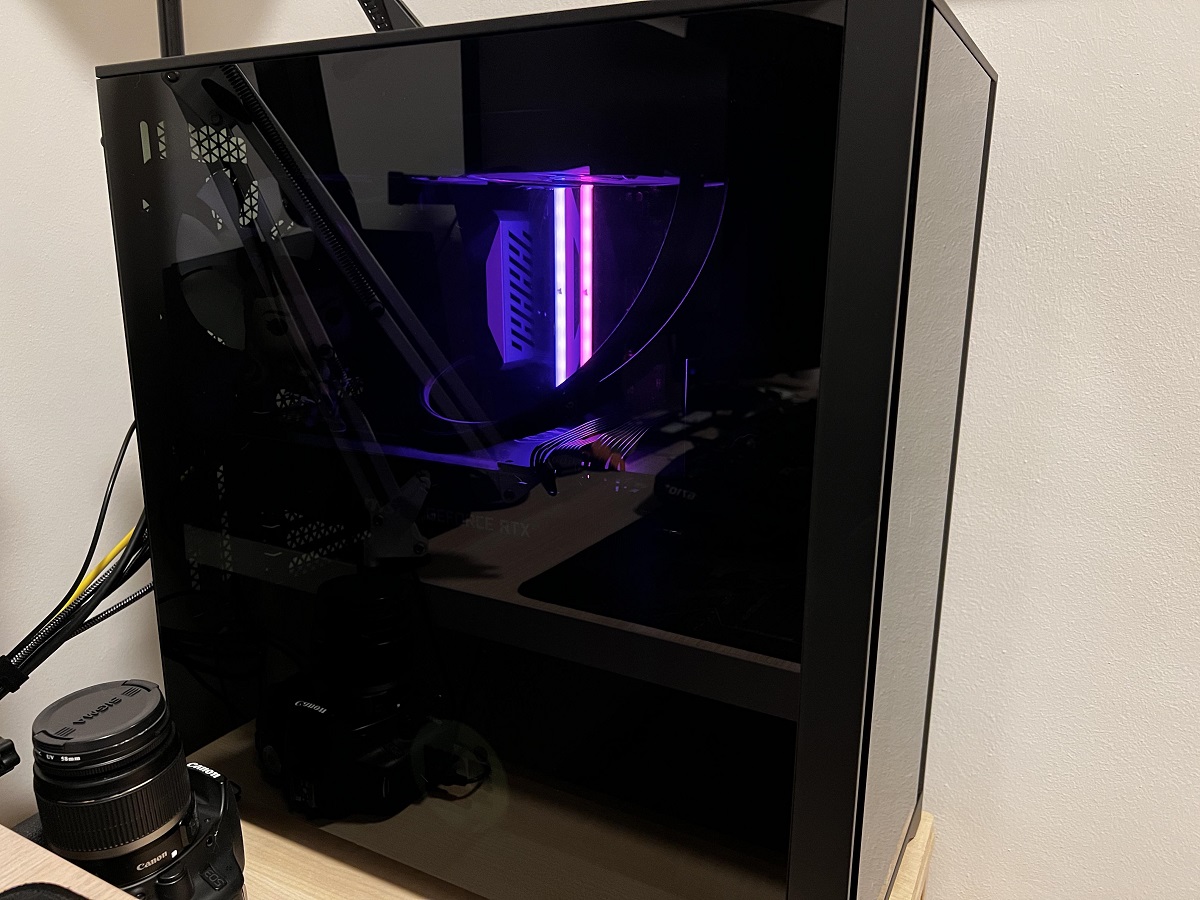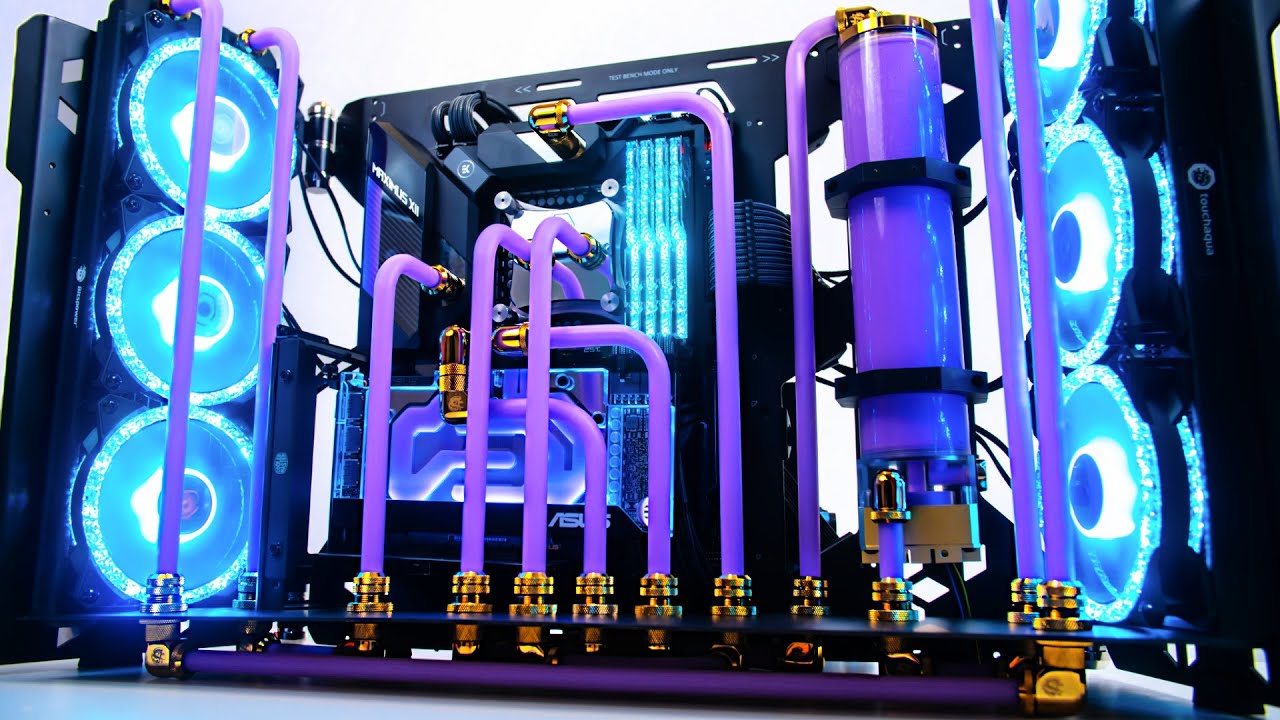Introduction
RGB RAM (Random Access Memory) is a popular choice among PC gaming enthusiasts, as it adds a vibrant and customizable element to their computer rigs. With RGB RAM, users can personalize their gaming setups by illuminating their RAM modules in various colors and lighting effects. While RGB RAM can enhance the aesthetics of a gaming PC, it may cause unnecessary power consumption and disturbance when the computer is in sleep mode.
In sleep mode, your computer enters a low-power state to conserve energy and reduce wear and tear on components. However, RGB RAM typically remains illuminated even when the computer is not in use. This constant power draw can affect energy efficiency, increase electricity bills, and even disrupt your sleep if your computer is in the same room.
In this article, we will explore the reasons why you might want to turn off RGB RAM in sleep mode and discuss different methods you can use to achieve this. Whether you want to conserve energy, minimize distractions, or simply reduce the strain on your eyes during sleep, turning off RGB RAM in sleep mode can be a practical solution.
By turning off RGB RAM in sleep mode, you can strike a balance between the visual appeal of RGB lighting during regular use and the energy-saving benefits of sleep mode. Let’s dive into the various methods available to accomplish this, ranging from using the motherboard’s software to physically disconnecting the RGB RAM modules.
Understanding RGB RAM
RGB RAM, as the name suggests, refers to Random Access Memory modules that come equipped with RGB (Red Green Blue) lighting elements. These RGB lighting features on RAM modules have gained popularity among PC enthusiasts and gamers due to their ability to add a visually striking element to their computer setups.
RGB RAM modules typically have small LEDs embedded on top or sides, which can be individually controlled to display different colors and lighting effects. This enables users to customize the appearance of their RAM modules, matching them with the overall theme of their gaming rig or personal preference.
It’s worth noting that RGB RAM doesn’t impact the performance or speed of the RAM modules themselves. It is purely a cosmetic feature that enhances aesthetics and allows users to personalize their computer systems.
RGB RAM modules are compatible with various software and systems that offer RGB lighting control, allowing users to modify colors, lighting effects, and even synchronize them with other RGB components like cooling fans, keyboards, and peripherals. This synchronization creates a unified and visually appealing lighting experience throughout your gaming setup.
Furthermore, some RGB RAM modules come with additional features, such as built-in heat spreaders and programmable lighting profiles. These features not only improve heat dissipation and overall system stability but also provide advanced customization options for lighting effects.
While RGB RAM provides an attractive and customizable element to PC gaming setups, it’s essential to consider the impact on power consumption. The RGB lighting on RAM modules requires an additional power supply, which can contribute to increased energy usage.
Now that we have a better understanding of RGB RAM, let’s explore why someone might want to turn off RGB RAM specifically in sleep mode and the different methods available to achieve this.
Why would you want to turn off RGB RAM in sleep mode?
While RGB RAM adds a vibrant and visually appealing element to your computer rig, there are several reasons why you might want to turn off RGB RAM specifically when your computer is in sleep mode:
- Energy conservation: Sleep mode is designed to reduce power consumption and extend the lifespan of your computer components. By turning off RGB RAM in sleep mode, you can further conserve energy and contribute to a greener environment.
- Reduced distractions: The glowing lights of RGB RAM modules can be distracting, especially when your computer is in the same room where you sleep. By turning off RGB RAM in sleep mode, you can create a more peaceful and conducive environment for rest.
- Improved sleep quality: Studies show that exposure to artificial light, particularly blue light emitted by electronic devices, can disrupt sleep patterns and affect the quality of sleep. By turning off RGB RAM in sleep mode, you can eliminate unnecessary light sources and promote a more restful sleep.
- Extended lifespan of RGB RAM: Constantly keeping RGB RAM illuminated, even when your computer is not in use, can potentially shorten the lifespan of the LEDs. By turning off RGB RAM in sleep mode, you can reduce wear and tear on the lighting elements and prolong their longevity.
- Customization control: Some users prefer to customize their RGB lighting effects and colors during active use of the computer but find the constant illumination during sleep mode unnecessary. Turning off RGB RAM in sleep mode allows for greater control over when and where the RGB lighting is displayed.
Considering these reasons, it becomes clear that turning off RGB RAM in sleep mode offers practical benefits such as energy conservation, reduced distractions, improved sleep quality, extended lifespan of RGB RAM, and customization control.
Now that we understand the motivations behind turning off RGB RAM in sleep mode, let’s explore different methods to accomplish this.
Different methods to turn off RGB RAM in sleep mode
If you want to turn off RGB RAM in sleep mode, there are multiple methods to achieve this. The suitability of each method may vary depending on your computer’s configuration and the available options provided by your motherboard or RGB lighting software. Here are some commonly used methods:
- Method 1: Using the motherboard’s software: Many modern motherboards come with software utilities that allow you to control and customize RGB lighting. Within these software utilities, you may find an option to turn off RGB RAM specifically in sleep mode. By enabling this feature, the RGB RAM will automatically turn off when your computer enters sleep mode, conserving energy and minimizing distractions.
- Method 2: Modifying BIOS settings: Some motherboards provide BIOS settings that enable you to control RGB lighting. Within the BIOS settings, you can potentially find an option to turn off RGB RAM in sleep mode. Access the BIOS settings by restarting your computer and pressing a specific key (usually Del or F2) during the boot-up process. Refer to your motherboard’s manual or manufacturer’s website for detailed instructions on modifying BIOS settings.
- Method 3: Using third-party software: Apart from the motherboard’s software, there are also third-party software options available that provide more extensive control over RGB lighting. These software tools may offer specific features to turn off RGB RAM in sleep mode. Examples of such software include Corsair iCUE, NZXT CAM, and ASUS Aura Sync.
- Method 4: Physically disconnecting the RGB RAM: If other methods are not viable or you prefer a more hands-on approach, you can physically disconnect the RGB RAM modules from your computer. However, this method requires caution and technical knowledge. Before proceeding, ensure that you have properly shut down your computer and disconnected the power supply. Open the computer case, locate the RGB RAM modules, and carefully detach the connections. Remember to reconnect them if you want to revert to using RGB RAM.
These methods offer varying levels of control and convenience. Choose the method that best suits your preferences and technical capabilities.
By using one of these methods, you can effectively turn off RGB RAM in sleep mode, providing the benefits of energy conservation, reduced distractions, improved sleep quality, extended lifespan of RGB RAM, and customization control.
Method 1: Using the motherboard’s software
One of the most convenient ways to turn off RGB RAM in sleep mode is by utilizing the software provided by your motherboard manufacturer. Many modern motherboards come with software utilities that allow you to control and customize various aspects of your computer, including RGB lighting.
To use this method, follow these steps:
- Identify the software utility provided by your motherboard manufacturer. It may have a specific name, such as Asus Aura Sync, Gigabyte RGB Fusion, or MSI Mystic Light.
- Launch the motherboard’s software utility on your computer. It may be pre-installed or require installation from the manufacturer’s website.
- Within the software utility, navigate to the section that controls the RGB lighting settings.
- Look for an option or setting that specifically refers to sleep mode or power management. This option may be labeled differently depending on the software.
- Enable the option to turn off RGB RAM in sleep mode. This setting ensures that the RGB lighting on your RAM modules is automatically disabled when your computer enters sleep mode.
- Save the changes and close the software utility.
By using the motherboard’s software, you can conveniently manage the RGB settings and specifically control the behavior of RGB RAM during sleep mode. This method eliminates the need for manual intervention every time you want to turn off RGB RAM. It provides a seamless experience and ensures that your computer conserves power and maintains a distraction-free environment during sleep.
However, please note that the availability and functionality of this feature may vary depending on the specific motherboard model and software utility. If you are having trouble finding the appropriate option or setting, refer to the user manual or support resources provided by your motherboard manufacturer.
Now that we have covered the first method, let’s explore an alternative approach to turning off RGB RAM in sleep mode – modifying BIOS settings.
Method 2: Modifying BIOS settings
Another method to turn off RGB RAM in sleep mode is by modifying the BIOS settings of your computer. The BIOS (Basic Input/Output System) is a firmware interface that allows you to configure hardware settings, including RGB lighting control.
To use this method, follow these steps:
- Restart your computer and enter the BIOS settings by pressing a specific key during the boot-up process. Common keys for accessing BIOS settings include Del, F2, or F10. The exact key may vary depending on your motherboard manufacturer, so refer to your motherboard’s manual or manufacturer’s website for the correct key.
- Navigate to the section that controls RGB lighting in the BIOS settings. This section may be labeled differently, such as “LED Control” or “RGB Configuration”.
- Look for an option or setting related to sleep mode or power management.
- Enable the option to turn off RGB RAM in sleep mode. This setting ensures that the RGB lighting on your RAM modules is automatically disabled when your computer enters sleep mode.
- Save the changes and exit the BIOS settings. Your computer will now boot up as usual.
It’s important to note that modifying BIOS settings requires careful attention and technical knowledge. Any incorrect changes to BIOS settings can potentially cause system instability or malfunction. If you are unfamiliar with BIOS settings, it’s recommended to consult your motherboard’s manual or seek assistance from a knowledgeable source.
Additionally, not all motherboards have BIOS settings that offer control over RGB lighting. The availability and functionality of the RGB control feature vary depending on the motherboard model and manufacturer. If you cannot find the appropriate option or setting in your BIOS, consider alternative methods such as using the motherboard’s software or third-party software.
Modifying BIOS settings provides a more granular level of control over your computer’s hardware, including the RGB RAM lighting. By adjusting these settings, you can ensure that RGB RAM is turned off in sleep mode, promoting energy conservation and minimizing distractions during your computer’s idle state.
Now that we have explored modifying BIOS settings, let’s move on to method 3 – using third-party software.
Method 3: Using third-party software
If your motherboard’s software or BIOS settings do not provide the option to turn off RGB RAM in sleep mode, you can turn to third-party software solutions. These dedicated software programs offer advanced control over RGB lighting and provide additional customization options that may not be available through other methods.
To use third-party software to turn off RGB RAM in sleep mode, follow these steps:
- Research and identify a reliable third-party software tool that is compatible with your RGB RAM modules and motherboard. Some popular options include Corsair iCUE, NZXT CAM, and ASUS Aura Sync.
- Download and install the chosen software tool from the official website or trusted sources.
- Launch the software and navigate to the section that controls RGB lighting.
- Explore the software settings and look for an option or feature that specifically addresses sleep mode or power management.
- Enable the option to turn off RGB RAM in sleep mode. This setting ensures that the RGB lighting on your RAM modules is automatically disabled when your computer enters sleep mode.
- Save the changes in the software and close the application.
Third-party software offers extensive control over RGB lighting, allowing you to synchronize colors and effects across multiple RGB components. In addition to turning off RGB RAM in sleep mode, you may also have the opportunity to create custom lighting profiles or schedule specific lighting configurations based on your preferences.
Keep in mind that third-party software solutions may have their own set of features, limitations, and compatibility requirements. It’s essential to verify compatibility with your RGB RAM modules and motherboard before downloading and installing any third-party software. Additionally, ensure that you download the software from official or trusted sources to avoid potential security risks.
By using third-party software, you gain access to advanced RGB lighting control options, including the ability to turn off RGB RAM specifically in sleep mode. This method provides flexibility and customization capabilities beyond what motherboard software or BIOS settings may offer.
Now that we have covered the third method, let’s proceed to method 4 – a more hands-on approach involving physically disconnecting the RGB RAM modules.
Method 4: Physically disconnecting the RGB RAM
If you prefer a more direct approach to turning off RGB RAM in sleep mode, you can consider physically disconnecting the RGB RAM modules from your computer. This method involves detaching the connections between the RGB RAM and your motherboard.
Before proceeding with this method, keep in mind the following considerations:
- Make sure you have shut down your computer properly and disconnected the power supply to avoid any electrical accidents.
- Consult your motherboard’s manual to locate the RGB RAM modules and understand the specific procedures for disconnecting them.
- Be cautious when handling computer components, especially when opening the computer case and working inside it.
Here are the steps to physically disconnect the RGB RAM:
- Turn off your computer completely and unplug the power supply.
- Remove the computer case cover carefully to gain access to the internal components.
- Locate the RGB RAM modules on your motherboard. They are usually labeled and easily identifiable.
- Identify the connections between the RGB RAM modules and your motherboard. These may include RGB cables or pins.
- Disconnect the RGB cables or remove the pins that connect the RGB RAM modules to the motherboard.
- Put the computer case cover back on and reconnect the power supply.
By physically disconnecting the RGB RAM modules, you ensure that the lighting on the RAM modules is completely turned off during sleep mode. This method offers a simple and effective solution for those who prefer manual control over the RGB lighting.
However, note that physically disconnecting the RGB RAM modules should be done with caution, especially for users who are not familiar with handling computer components. If you are unsure about the procedure, it is advisable to seek assistance from a knowledgeable individual or consult a professional.
Now that we have explored all four methods of turning off RGB RAM in sleep mode, you can choose the method that suits your needs and technical skills.
Conclusion
Turning off RGB RAM in sleep mode can help conserve energy, reduce distractions, improve sleep quality, extend the lifespan of RGB RAM, and provide customization control over your computer’s lighting. We discussed four different methods to achieve this:
- Using the motherboard’s software: Many motherboards come with software utilities that allow you to control RGB lighting, including the option to turn off RGB RAM specifically in sleep mode.
- Modifying BIOS settings: Some motherboard BIOS settings provide control over RGB lighting and may offer the option to disable RGB RAM during sleep mode.
- Using third-party software: There are dedicated software tools available from various manufacturers that provide advanced control over RGB lighting, including the ability to turn off RGB RAM in sleep mode.
- Physically disconnecting the RGB RAM: For a more hands-on approach, you can physically disconnect the connections between the RGB RAM modules and the motherboard to ensure the lighting is turned off during sleep mode.
Each method offers its own advantages and considerations, so choose the one that best suits your preferences and technical capabilities. Whether you want a seamless software solution or prefer a more direct approach, these methods provide you with options to control the RGB lighting behavior of your RAM modules in sleep mode.
Remember to consult your motherboard’s manual or manufacturer’s website for specific instructions and to ensure compatibility with your RGB RAM and motherboard. Additionally, exercise caution when making changes to BIOS settings or handling computer components.
By turning off RGB RAM in sleep mode, you can strike a balance between the visual appeal of RGB lighting during regular use and the energy-saving benefits and improved sleep environment that sleep mode provides.
Now that you have a better understanding of the different methods available, you can make an informed decision on how to manage your RGB RAM in sleep mode and create a computer setup that not only looks great but also promotes energy efficiency and a restful sleep environment.

























